The iPhone 7 and iPhone 7 Plus Review: Iterating on a Flagship
by Joshua Ho & Brandon Chester on October 10, 2016 8:00 AM EST- Posted in
- Smartphones
- Apple
- Mobile
- iOS
- iOS 10
- iPhone 7
- iPhone 7 Plus
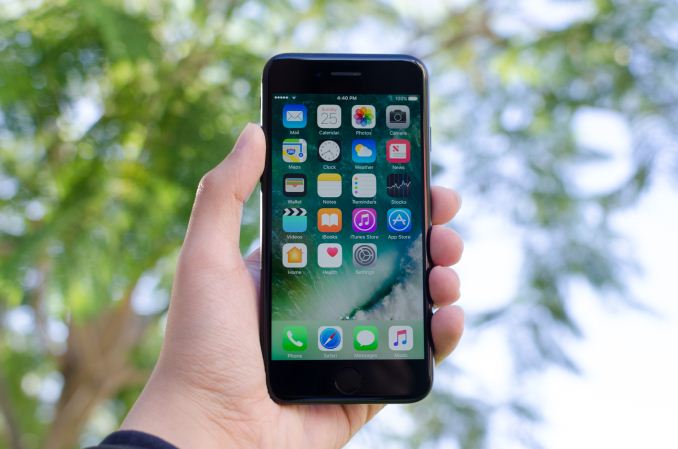
The iPhone 6 was a runaway success by any measure. The A8 SoC may have been built on a temperamental 20nm process – something that dogged all other phone vendors – but for Apple it didn’t matter. The iPhone 6 was the first iPhone generation with a phablet variant. By all metrics it was a resounding success as it capitalized on this pent-up demand for larger iPhones.
The iPhone 6s continued this success, and in a year of disappointing launches due to the weak showing of the widely used Snapdragon 808 and 810, the 6s and 6s Plus looked particularly good as the competition really couldn’t measure up. There were a lot of Android devices that performed better than the iPhone 6s/6s Plus in some particular area – a better camera or longer battery life, for example – but taken as a whole the iPhones 6s were just clearly superior devices. If nothing else, they hit that particular balance between features and performance that a lot of users were looking for.
Meanwhile, the addition of 3D Touch was the sort of refinement to the user experience that still remains exclusive to the iPhone. Other OEMs have implemented some form of force sensing, but the implementation is not really executed in a way to improve user experience in a noticeable way. Adoption remained weak as well, with no real widespread support in the ecosystem for such features.
That said, the iPhone doesn't exist in a vacuum on its own. Even in the high-end market segment Apple limits themselves to, they have a loyal opposition, and that opposition is of course Samsung. Looking at the state of affairs there, relative to the iPhone 6s the Galaxy S6 had a better camera for still images, but it was obvious that it couldn’t freeze motion as well. The phone itself felt like a brick despite its 6.8mm thickness due to the relatively enormous battery. Despite the larger battery, battery life on LTE just wasn’t where it needed to be. The Galaxy Note5 was in many ways a similar story, which isn't too surprising as the Note has moved closer and closer to being a phablet-version of the Galaxy S.
But, as the story goes, Apple's competition has improved and advanced. The Galaxy S6 gave way to the even better Galaxy S7, HTC finally found their groove with the HTC 10, and OnePlus's 3 is their best showing yet. The competition is getting better, and with the iPhone 7, Apple can no longer rely on weak competition or pent-up demand for some major feature. The iPhone 7 must stand by its merits against this increasingly stiff competition.
It’s interesting to write a review like this, because for better or worse, I didn't have serious exposure to the iPhone from the beginning. When the first iPhone launched in 2007, I was in school and still used a flip phone that spent most of its time functioning as an alarm and a timer and not much else. My first exposure to the iPhone was the 3GS a few years later, which left a fairly poor taste in my mouth as it just didn’t feel all that functional. The iPhone 4 was miles better, but even then it felt like the experience was constrained. Something as simple as turn by turn navigation which I took for a given on Android devices like the Galaxy S1/Captivate and the Desire HD/Inspire 4G were basically absent on iOS unless you were willing to pay a significant amount of money for a third party application. The default maps application didn’t offer that kind of functionality and Google Maps was completely absent, as was YouTube. For better or worse, for years after this initial brush with iOS I stuck with Android devices. It wasn’t until iOS 8 and the iPhone 5s that I really started doing any kind of examination of iOS devices again.
Reviews are normally no place to be discussing one's life story, because realistically no one reading this review really cares about the person writing this review. But the perspective here matters when considering the approach I've taken to this review. I’ve spent the past two years using the iPhone 6 as a secondary phone so I’m increasingly aware of how iOS works, but even as good as the iPhone 6/6s series were, Android devices remain my daily driver for familiarity reasons. It’s easy to overlook flaws in Android devices if you never actually have to use them as a daily driver, so this review attempts to avoid the common issue of a double standard for reviews between Android and iOS devices. With that said, we can move on to the basic specs.
| Apple iPhone 7 and 7 Plus | ||||
| Apple iPhone 7 | Apple iPhone 7 Plus | Apple iPhone 6s | Apple iPhone 6s Plus | |
| SoC | Apple A10 Fusion 2 x 2.3 GHz Hurricane 2x little cores |
Apple A9 2 x 1.85GHz Apple Twister |
||
| GPU | 6 Core PowerVR GPU | PowerVR GT7600 | ||
| Display | 4.7-inch 1334 x 750 IPS LCD, DCI-P3 | 5.5-inch 1920 x 1080 IPS LCD, DCI-P3 | 4.7-inch 1334 x 750 IPS LCD, sRGB | 5.5-inch 1920 x 1080 IPS LCD, sRGB |
| Size / Mass | 138.3 x 67.1 x 7.1 mm, 138 grams | 158.2 x 77.9 x 7.3 mm, 188 grams | 138.3 x 67.1 x 7.1 mm, 143 grams | 158.2 x 77.9 x 7.3mm, 192 grams |
| Battery | 1960 mAh (7.55Whr) |
2900 mAh (11.17Whr) |
1715 mAh (6.6Whr) |
2750 mAh (10.59Whr) |
| Rear Cameras | 12MP ƒ/1.8 OIS, Wide Color Gamut, Quad LED True Tone Flash |
12MP ƒ/1.8 wide angle, OIS, Wide Color Gamut, Quad LED True Tone Flash 12MP ƒ/2.8 telephoto, 2x optical zoom, Wide Color Gamut, Quad LED True Tone Flash |
12MP with 1.22µm pixels + True Tone Flash | 12MP with 1.22µm pixels + True Tone Flash + OIS |
| Front Camera | 7MP ƒ/2.2, Wide Color Gamut, Retina Flash | 7MP ƒ/2.2, Wide Color Gamut, Retina Flash | 5MP F/2.2 + Retina Flash |
5MP F/2.2 + Retina Flash |
| Storage | 32GB/128GB/256GB | 16GB/64GB/128GB (Launch) 32GB/128GB (Refresh) |
||
| I/O | Apple Lightning connector | Apple Lightning connector, 3.5mm headset | ||
| WiFi | 2.4/5GHz 2x2 802.11a/b/g/n/ac, BT 4.2, NFC | 2.4/5GHz 2x2 802.11a/b/g/n/ac, BT 4.2, NFC | ||
| Launch Price | $649/749/849 32/128/256GB | $769/869/969 32/128/256GB | $649/749/849 16/64/128GB | $749/849/949 16GB/64/128GB |
Looking at the basics, the iPhone 7 and 7 Plus bring at least a few new things to the table that we haven't seen from Apple before, such as their first SoC with heterogeneous CPU cores. The iPhone 7 Plus brings a second camera with a full-frame equivalent focal length of 56mm, which isn't really a unique idea but does represent a unique execution, as the G5's second camera has an even shorter focal length. There's some irony here as Corephotonics and Qualcomm have been demonstrating almost the same implementation as what we see in the iPhone 7 Plus, but Apple is the first to market here. IP67 means the iPhone is impervious to dust and is capable of sustaining 1 m of water depth for at least 30 minutes, but water damage is never covered by warranty so you shouldn't push your luck here. Other changes here are more subtle such as the quad LED flash with PWM compensation, stereo speakers, and doubling the storage for all models relative to the 6s last year.
Finally, on a quick housekeeping note before we get started, I want to mention that we’ve changed our review format a bit this year compared to past reviews. Because our analysis on a few deep-dive items is going to take a bit longer – both the new low power CPU cores of the A10 Fusion SoC and wide color gamut of the new cameras present us with some particularly interesting scenarios – rather than hold everything back we’ve split things up. Today’s review of the iPhone 7 is just that, a review of the phone. Meanwhile we’ll be publishing a deep dive article later this month on A10, Hurricane, A10’s GPU, wide color gamut photography, and the rest of those fine architectural details that we like to dig into.
Design
To start the examination of the iPhone 7 and 7 Plus beyond bullet points on a spec sheet, we can look at the design of the iPhone 7. It’s easy to take a potshot here and claim that the iPhone 7 and iPhone 6 have identical designs, but the design is different enough that you can identify either the iPhone 7 or 7 Plus from a distance if you can see the camera or back cover in general. However, if you can only see the front of the phone it’s not going to be easy to tell the iPhone 6 and 7 apart. Just about the only differentiating feature here is that the new earpiece is now slightly wider. We seem to receive requests for continued comparison of design details, and here the iPhone doesn’t have any obvious issues. The ambient light sensor appears to bisect the earpiece, while the front-facing camera is lined up with the earpiece.
What is noticeable if you use the phone is the new solid state home button. While there is a new Taptic Engine to enable this home button, it does take getting used to as the home button is not a one-to-one replica of a physical home button as far as the haptic sensation goes. The Taptic Engine manages to create a facsimile of what a home button should feel like but unlike a real button it doesn't actually depress so it isn't quite as accurate as something like the Macbook trackpad in replicating the feel of a real button.
From there, the iPhone 7 and 7 Plus see some notable changes to the back and sides of the phone. While the buttons, downward firing speaker, and Lightning port remain in the same place, the 3.5mm jack has been removed. There’s been a lot of discussion here but after trying some pre-production AirPods I think it’s fairly safe to say that wireless is the future for any kind of mobile device, but the execution itself requires closer examination here that doesn’t necessarily fit into this part of the review. The one notable change here is to the SIM tray, which appears to have some kind of gasket to seal it against water and dust ingress.
Looking at the back of the phone you really see most of the design changes. I’ve noticed a lot of people seem to believe that there's nothing notably different about this kind of back cover design, but it seems that a lot of this boils down to some similarities in shape and the use of aluminum. I would argue that aluminum alone doesn't define industrial design, as the One M7 and iPhone in all iterations don't really share much in common. Similarly, I would argue that the Honor 8 and Galaxy Note7 don't share a lot in industrial design just because both use tempered glass back covers along with an aluminum frame. Of course, if material changes are the only thing that matter then the jet black variant of both the iPhone 7 and 7 Plus have a notably different design for this color variant alone, which has a glossy anodized finish instead of a sand-blasted one.
Putting aside discussions of materials, the iPhone 7 and 7 Plus both have distinctive changes to the antenna lines and the camera hump. While the iPhone 6 and 6s really tried to avoid showing a camera hump at all, the iPhone 7 and 7 Plus have distinct designs that highlight its presence even if the profile of the hump has been changed to make the difference in thickness less dramatic. The iPhone 7 also has a noticeably larger cover lens, but this isn't all that noticeable unless you have the iPhone 6 and 7 side by side. The iPhone 7 Plus on the other hand has a distinctly different camera design as the dual cameras are very obviously a point of differentiation compared to the iPhone 6 and 6s Plus.
The other noticeable difference is how the back cover integrates the external antennas. The use of parts of an aluminum unibody as an antenna isn't a new idea and dates as far back as the iPhone 4. However, the polycarbonate lines that help to separate the antenna from the rest of the back cover have been moved around to make them less noticeable. The jet black variant has especially close color and texture matching, which makes the antenna lines basically invisible. It's interesting to see how various OEMs have attempted to avoid or not avoid the issue of hiding these antenna lines, as Apple's approach here is fairly unique as far as I can tell. The jet black variant also helps to make the entire phone look like a monolith. The in-hand feel is distinguished in the sense that it's glossy all around instead of the traditional matte finish that is used in aluminum unibodies but really it almost just feels as if it's made of glass and is very smudge-prone even with the oleophobic coating and can easily scratch compared to something like glass.
Apple has also made new leather cases to fit the iPhone 7 and 7 Plus. The general design and feel isn't changed significantly, but the buttons are now made out of aluminum which improves the feel of them significantly to the extent that I don't feel like I'm losing anything in feel relative to the naked phone. This helps to differentiate them relative to third party cases, particularly as the cost is generally much higher than the average case you might find on Amazon. In general the design is also well executed for a slim case as the camera hump isn't exposed and the display is recessed a bit to avoid direct contact in a drop.
Overall, the design of the iPhone 7 and 7 Plus is mostly an evolution of the iPhone 6's design, but it changes enough things that it doesn't necessarily feel like it's the same exact thing. I would say that it isn't quite as dramatic as the change from the One M9 to the HTC 10 but it is more noticeable than something like the change from the S6 edge+ to the Note7. The in-hand feel remains good and there are no noticeable problems there. I don't think that the design is especially notable at this point, but there are only so many ways to make a phone.



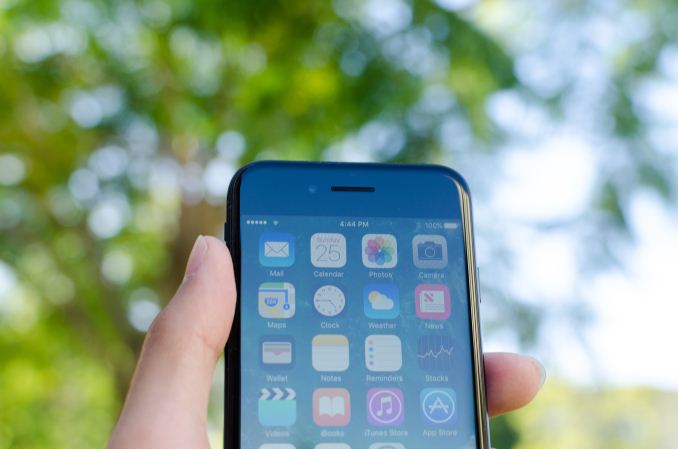
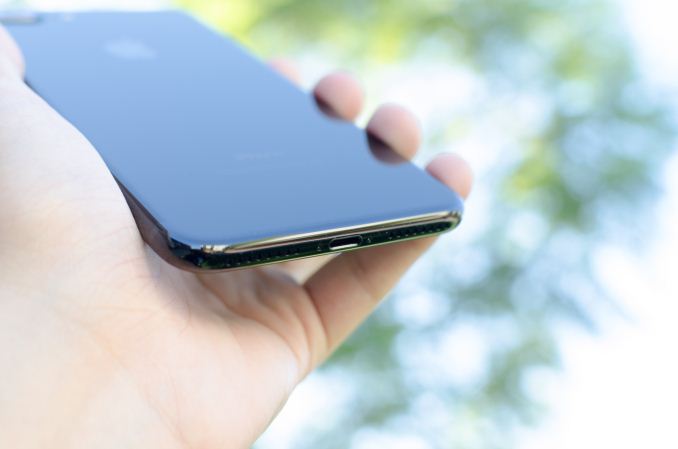
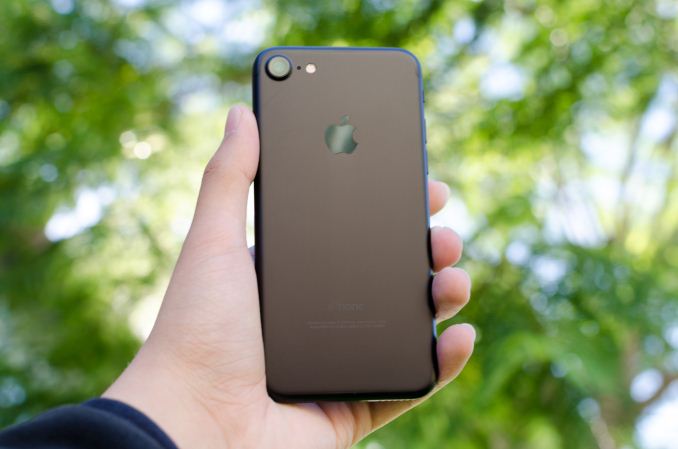
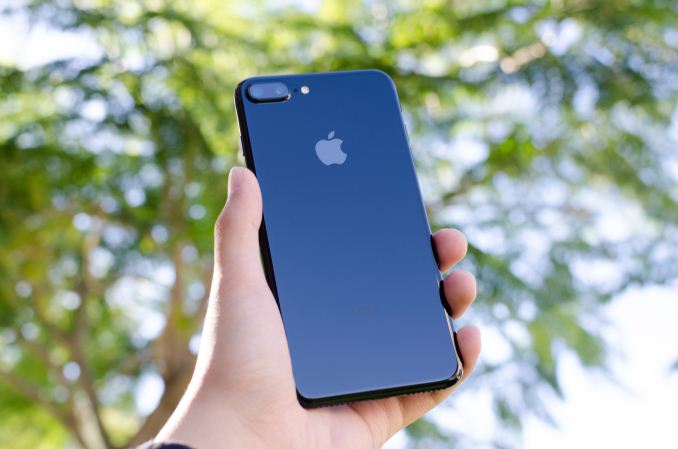


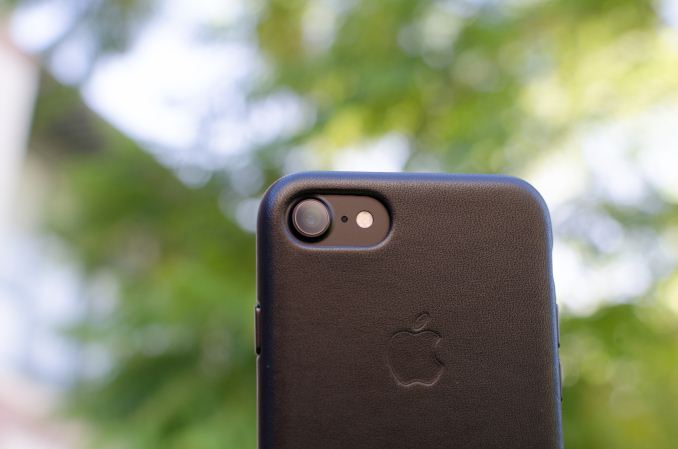








377 Comments
View All Comments
Matt Humrick - Wednesday, October 12, 2016 - link
"Because: bluetooth is on (and connected to the car), push for email is activated, plenty of applications are activated and running in the background (Whatsapp, Messenger, Skype), location is on, and she is either using the phone doing some internet like facebook or it remains idle, open and close regularly along the 3 hours."Exactly! How are we supposed to test "real life" battery performance when every single person is running different apps, using different screen brightness settings, different mixture of radios on/off, different signal strengths, different use cases, etc. Our battery life tests are not designed to tell you how long YOUR phone will last on a single charge. They are designed to objectively compare one phone to another in an ideal setting. So a phone that lasts 8 hours in our test will generally last longer than another phone that lasts 6 hours given the same workload. The only other option is to run dozens, maybe hundreds, of battery tests all while running different apps, brightness, etc. so that one of them might match up with how a single reader uses their phone.
jlabelle2 - Thursday, October 13, 2016 - link
"How are we supposed to test "real life" battery performance when every single person is running different apps"Let's be real here: I don't think that web browsing 8 hours non stop is representative of ANY single person.
Also, I think that everyone will agree that having Location, Bluetooth (especially on the iPhone 7 pushing BT headset) and email push (which is the default settings) is pretty standard for the majority of users. At last, iMessage working only on Apple devices, which are a minority, it is fair to assume that almost everyone is using AT LEAST one other messaging service.
Bottom line: such battery tests from Anandtech have NEVER been realistic about the real usage as the consumption of the screen, the radio stack and optimization of the OS are not taken into account in a balanced way representative of any users.
GSMArena for instance has 3 values that you can mix depending of your usage. And this make much more sense.
Otherwise, a meaningful test would be having BT, Localization, Push and one messaging app activated, Facebook also (as everyone has that) and a mix of idle + usage case with some browsing, some picture taken and some video. But this battery test is just useless as it favors low consumption screen (where the low resolution of the iPhone has an advantage) and reduce the impact of the connectivity consumption (where the iPhone has no adantage and even trail on an hardware side while having much smaller battery than competition).
Obviously, it would put the iPhone is a much more realistic light which is not following the editorial note of the site...
lilmoe - Tuesday, October 11, 2016 - link
"It is a true workout of display, radio, and SoC, so it's very much a real life benchmark"Oh dear, Ryan, JUST heed the advice. People are slowly realizing that the very benchmarks you're mentioning are absolutely irrelevant in terms of real life scenarios. This is BAD for Anandtech, because just like the op said, these "benchmarks" are dragging you to irrelevance as well.
We criticize because we LIKE this website, not because we hate it. Your stubborn *opinion* isn't helping.
thek - Wednesday, October 12, 2016 - link
''so it's very much a real life benchmark.'' Did you really just say that?!Doesn't a reviewer feel bad or weird when he reviews a phone, provies ''scientific numbers'' such as 8 hours of battery time on wifi loading pages just to use the phone afterwards in real life as a normal user and get 4 max hours of SOT? (and yes, while on wifi loading pages)
There are two issues here:
1. Clearly, everyone can agree that current benchmarks provide completely way off numbers as they *do not* provide a real life case. or else we'd all have 8 hours of SOT on an Iphone. This either needs to be adjusted or removed altogether
2. Companies probably adjust their software to excel in some of these benchmarks in order for you to report it
I'm having a really hard time supporting this site if it bashes good phones like the OP3 because their numbers on the screen benchmakrs were low (while everywhere I looked it was said that the screen is more then fine for a *day to day use for the avarage user*, which is what we're looking for - we're not mechines that can spot the differences) and a site that says that the Iphone7 has a great battery life because the numbers said it while obviously it's incorrect.
You need to understand that right now you are saying if a product is bad or good based on numbers that will back you up. I'm saying that you are blinded by the numbers and they clearly do not show if a product is good or bad.
yipwssg - Tuesday, October 11, 2016 - link
"Apps like WeChat are fairly notorious for holding wakelocks on Android and never really stopping background resource usage " - you have already acknowledge this problem in Android.In real life, Android user will never disable IM application (wechat, LINE , Whatsapp, facebook messenger etc) before surfing net or web browsing.
In the Battery test , why you disable the location and other background services before the test ?
It will be interesting to see how long those Android phones will last with all those background service enable verse iPhone with the same IM application installed.
jlabelle2 - Thursday, October 13, 2016 - link
"In real life, Android user will never disable IM application (wechat, LINE , Whatsapp, facebook messenger etc) before surfing net or web browsing.In the Battery test , why you disable the location and other background services before the test ?"
^^^^^ THIS ^^^^.
A million times. I do not care that the phone is only lasting 4 hours when Anandtech said 8. What I care is how it compares to others. And you cannot tell from this test because the test is very skewed to certain characteristic of the phone (screen consumption, optimization of the web browser and ... that's it).
Anandtech has always insist of how iOS is efficient (which I am not critizing) compared to much bigger battery competitors. B
ut the thing is that once you start to consider real usage, where your phone is not always on (so low density / small screen lower consumption is less a factor) and all the connectivity and push activated like in real life (where efficiency of the modem or GPS or BT module and the battery size have a direct impact), the result is completely different.
ArmedandDangerous - Tuesday, October 11, 2016 - link
Is there a reason why all the HTC 10 RAW photos are at 2s shutter which many times is totally overexposed?JoshHo - Tuesday, October 11, 2016 - link
The images were metered to reach near base ISO at 0 EV. The original DNG files are available if you would like to play with them yourself. The goal was to provide a reference image that could show all detail in the scene.Agent Smith - Tuesday, October 11, 2016 - link
I'm still waiting for Apple to support AptX on their phones?Now if you bear in mind the direction they're going with cordless audio you'd think the iPhone 7 would actually include support and promote this technology? Everyone knows the MacBooks support AptX yet an actual iPhone, that your 'more likely' to use with a cordless device, DOES NOT.
Go figure the Apple logic in that?
dumbnub - Tuesday, October 11, 2016 - link
It's funny, there is this phone reviewer on YT and she always bashes phones for not having accurate colors, she does all the tests with graphs and is always disappointed when they aren't accurate but when she bought a samsung S7 for herself, that has a more natural color mode, which she confirmed is more natural, she uses the default over-saturated mode because she says she prefers it and was like W.T.H. lol. I was always suspect about the whole arguement for natural colors because I loved the screen on the htc m7 and that isn't particularly accurate.